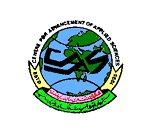Applied Biological Research - June
D. Devipriya and P.M. Radhamany
Click here to download article filePublished online on : 01-Jun-2024
DOI Number - 10.48165/abr.2024.26.01.33
Pallavi Majumder and Suprakas Hazra
Click here to download article filePublished online on : 27-May-2024
DOI Number - 10.48165/abr.2024.26.01.32
Nishkala G. Appaji and B.P. Harini
Click here to download article filePublished online on : 23-May-2024
DOI Number - 48165/abr.2024.26.01.31
Uma Thakur and Nitin Dongarwar
Click here to download article filePublished online on : 22-May-2024
DOI Number - 10.48165/abr.2024.26.01.30
Richa Bhardwaj, Devyani Naruka and Smita Purohit
Click here to download article filePublished online on : 20-May-2024
DOI Number - 10.48165/abr.2024.26.01.26
Ami Shah and R. Gadhvi
Click here to download article filePublished online on : 17-May-2024
DOI Number - 10.48165/abr.2024.26.01.29
Ashim Chakravorty
Click here to download article filePublished online on : 08-May-2024
DOI Number - 10.48165/abr.2024.26.01.28
Mahidhar Prasad Tiwari and Poonam Tiwari
Click here to download article filePublished online on : 07-May-2024
DOI Number - 48165/abr.2024.26.01.27
Saber W. Hamad, Ateeq Ahmed Al-Zahrani, Hussain D. Almalki, Sarwan W. Bradosty, Hasan Nudin Nur Fatihah, Talar K. Anwar, Asaad Mohammed Mahmood, and Abdulrahman Mahmoud Dogara
Click here to download article filePublished online on : 30-Apr-2024
DOI Number - 10.48165/abr.2024.26.01.19
Shweta B. Kukreti* and Dipika Ayate
Click here to download article filePublished online on : 29-Apr-2024
DOI Number - 10.48165/abr.2024.26.01.18
Abdulrahman Mahmoud Dogara, Harmand A. Hama and Dogan Ozdemir
Click here to download article filePublished online on : 25-Apr-2024
DOI Number - 10.48165/abr.2024.26.01.25
Varna Sampath, M. Shivashankar, and R. Rangeshwaran
Click here to download article filePublished online on : 21-Apr-2024
DOI Number - 10.48165/abr.2024.26.01.24
Vishwajeet Singh, Med Ram Verma and Subhash Kumar Yadav
Click here to download article filePublished online on : 14-Apr-2024
DOI Number - 10.48165/abr.2024.26.01.23
Bhupendra Narayan Singh Yadav, Priyanka Sharma, Shristy Maurya, and Rajiv Kumar Yadav
Click here to download article filePublished online on : 09-Apr-2024
DOI Number - 10.48165/abr.2024.26.01.22
Sanjeeda Khatoon and Amar Singh
Click here to download article filePublished online on : 07-Apr-2024
DOI Number - 10.48165/abr.2024.26.01.21
Jyoti M. Patki and Shruti Purohit
Click here to download article filePublished online on : 02-Apr-2024
DOI Number - 10.48165/abr.2024.26.01.20
